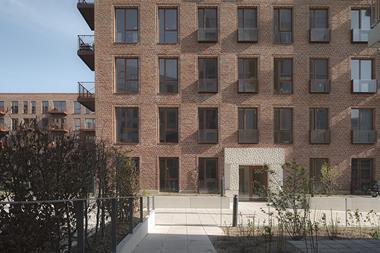The subjects of skinny jeans, exposed piping and cashflows were raised in a discussion of real estate investment strategy at IP Real Estate’s Awards & Conference in Copenhagen today.
Delegates heard how institutional real estate investors risked playing catch-up as demographic change altered traditional office and retail markets, with investors doing their best to be proactive rather than reactive.
Alternative sectors, such as healthcare, as well as emerging markets such as Brazil and India, are now on investors’ radar.
The needs of corporate occupiers are dictated, according to PGGM senior portfolio manager Werner Sohier, by the desires of employees, something the investor has experienced first hand with a refurbished office asset it owns in San Francisco.
“Five years ago, we put in a fancy ceiling for a financial tenant,” Sohier said. “Now we have Google there so we changed it all, painting the ceilings black, exposing the pipes and making it look ‘hip’ and ‘cool’.”
Sohier said flexibility of use and space was key in such a rapidly changing occupational environment.
“You need the building to be as flexible as possible,” he said.
“In India, we have a McDonald’s right at the entrance of a shopping centre as an anchor – but I’m not sure how long that will be the case for.”
KGAL managing director of real investments, André Zücker, said the firm’s experience with an asset in Chicago involved dressing appropriately and wearing “skinny jeans” to fit in with prospective tenants.
“We’re putting a lot of effort into cities – we try to find out the patterns and how people want to work,” he said.
Growing middle classes in the emerging markets of Asia and Latin America are also identified as demographic game-changers.
Fellow panellist Dietrich Heidtmann, managing director and head of international capital markets at GTIS Partners, said he was surprised at how investors “ignored the predictability” of sustainable demands, such as the return to form of the US residential sector.
“The single-family rented sector is the fasted growing sector in the US, but it’s not yet something institutions have embraced,” Heidtmann said.
“The industry is picking up on changes as opportunities to invest arise.”
Some opportunities, he said, are less suitable for institutional pension fund capital.
ATP Real Estate head of international investments Allan Mikkelsen said considering demographic change is a key part of investment strategy.
Investment in alternative assets, he said, made sense despite the issue of a retirement home being slightly removed from traditional real estate.
“There are operators in many industries who need walls and a roof – and there are customers,” he said.
Panel chair Andrew Angeli, head of UK research at CBRE Global Investors, said investors needed to respond to an ageing society, citing the possibility that there could be as many as 700,000 citizens over the age of 100 in Japan.
Nevertheless, Sohier said PGGM was “very focused” on Japan and still saw opportunity.
“We are very focused on Tokyo,” he said. “Would we invest in other parts of Japan? Probably not.”
Angeli said demographics had “nudged” investors towards new geographies.
“Investment in developed Europe will shrink, as it will in North America,” he said, pointing to emerging Asia as a region set for significant growth.
“We should expand our investor universe,” he said.










